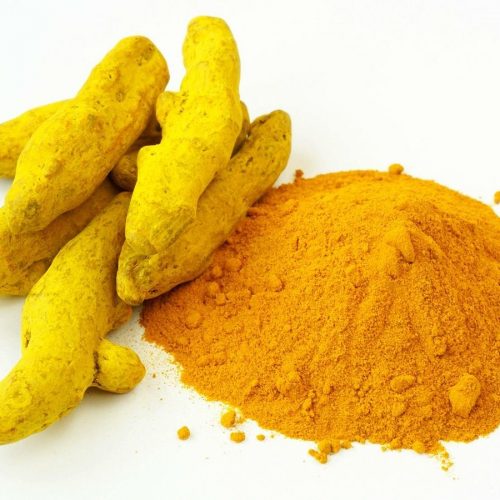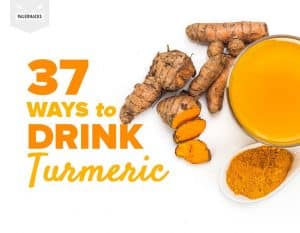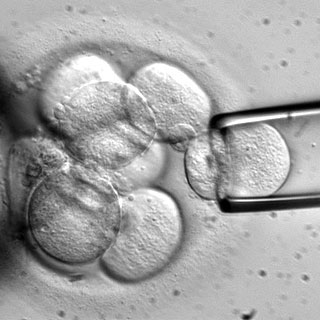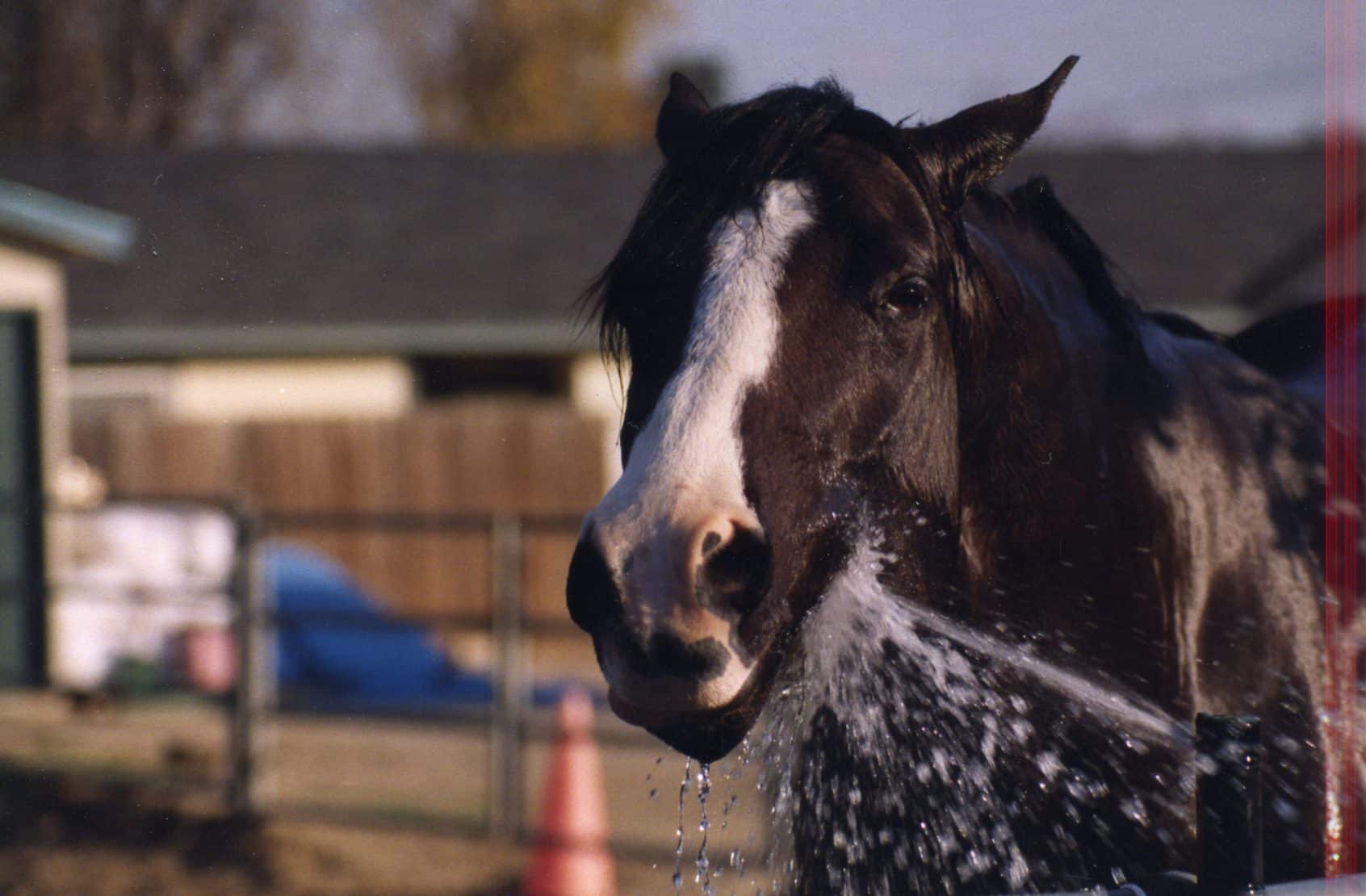 It seems like the past three years or so has seen an increased interest in turmeric for the treatment of various horse problems: mostly those that involve inflammation of some sort (e.g., arthritis). Like most of the “natural” products with which horse owners are presented, the questions about turmeric are usually along the lines of, “Does turmeric work?” Unfortunately, when asked this way, a legitimate question about a potentially therapeutic substance usually turns into a debate based on opinions. Posing questions about therapeutic effectiveness as “Yes,” or “No” questions is a rather unfortunate way to look at things, actually. It begs a lot of questions, such as, “Work for what?” Or, “Work how?”
It seems like the past three years or so has seen an increased interest in turmeric for the treatment of various horse problems: mostly those that involve inflammation of some sort (e.g., arthritis). Like most of the “natural” products with which horse owners are presented, the questions about turmeric are usually along the lines of, “Does turmeric work?” Unfortunately, when asked this way, a legitimate question about a potentially therapeutic substance usually turns into a debate based on opinions. Posing questions about therapeutic effectiveness as “Yes,” or “No” questions is a rather unfortunate way to look at things, actually. It begs a lot of questions, such as, “Work for what?” Or, “Work how?”
Rather than simply perpetuate a debate, I thought that I’d give you some insight about how I think about and answer such questions. Horse owners are confronted with them all of the time. I mean, how many different products or services can you name that you’ve wondered about in the last, oh, week or ten days? I don’t find testimonials particularly persuasive; you can always find someone to talk favorably about some product or service. That’s why I prefer to look for evidence. Who knows, maybe you’ll find the process to be of some help.
1. What is it?
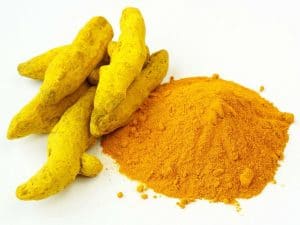 Before you start into wondering “if” something works. It’s always a great idea to try to fully understand what it is. To be sure, even that can be hard sometimes; for example, try to come up with a generally accepted definition of “chiropractic.” Fortunately, with turmeric, it’s not so hard.
Before you start into wondering “if” something works. It’s always a great idea to try to fully understand what it is. To be sure, even that can be hard sometimes; for example, try to come up with a generally accepted definition of “chiropractic.” Fortunately, with turmeric, it’s not so hard.
Turmeric is rooty plant that’s part of the ginger family (don’t say TOO-mer-ic, like I used to do). It’s native to southern Asia, where is thrives in temperate climates with lots of rain. It can be used fresh, but mostly the roots are boiled and dried, then ground into a deep orange-yellow powder. It provides a distinctive color and flavor to the cuisines of many southeast Asian and Middle Eastern countries: it’s used in a lot of curry dishes. The intense color can also be used as a fabric dye. Here’s an easy recipe using turmeric that I love, which turns cauliflower into a delicious treat.
2. What’s in it?
 In addition to its intense color and flavor, it turns out that turmeric contains one primary active ingredient, called curcumin. It’s a chemical. This fact highlights a point that I try to make when talking to folks about “natural” remedies (which is one of the appeals of turmeric to some folks, I think). When a natural substance has an effect, it’s because there’s at least one chemical in it. NaCl doesn’t know if it comes from the ground or the ocean – it’s just salt.
In addition to its intense color and flavor, it turns out that turmeric contains one primary active ingredient, called curcumin. It’s a chemical. This fact highlights a point that I try to make when talking to folks about “natural” remedies (which is one of the appeals of turmeric to some folks, I think). When a natural substance has an effect, it’s because there’s at least one chemical in it. NaCl doesn’t know if it comes from the ground or the ocean – it’s just salt.
People have known about curcumin for a long time; it was first isolated back in 1815, the year that the world’s first commercial cheese factory was established, in Switzerland (you find out all sorts of fun stuff if you just follow your intellectual curiosity – here’s a link). It’s been used as a medicinal substance for much longer than that, being an important component of treatments in Ayurvedic medicine, for example (Ayurveda is a system of medicine rooted in the Indian subcontinent). So, given that there’s a chemical in turmeric, that the chemical has been identified, and that turmeric has been used as a medicinal substance for a long time, it would be silly not to be curious to see if it really has any effect. Turns out that many people – including horse owners – have been, and are – very curious.
3. What’s it supposed to do?
 Curcumin does appear to have biological activity. That is, when tested in laboratories under various conditions, curcumin (and related substances) do often do something. That’s important when looking into these sorts of products, because there are plenty of them that have never been shown to do anything. Confusingly, curcumin seems to do a bit of everything when you start to look around. For example, in one study, looking at the mechanism of action of curcumin in human Alzheimer’s disease, it’s reported that curcumin, “Inhibits the formation and promotes the disaggregation of amyloid-β plaques, attenuates the hyperphosphorylation of tau and enhances its clearance, binds copper, lowers cholesterol, modifies microglial activity, inhibits acetylcholinesterase, mediates the insulin signaling pathway, and is an antioxidant.” That’s a lot of stuff, even if I don’t know exactly what everything means.
Curcumin does appear to have biological activity. That is, when tested in laboratories under various conditions, curcumin (and related substances) do often do something. That’s important when looking into these sorts of products, because there are plenty of them that have never been shown to do anything. Confusingly, curcumin seems to do a bit of everything when you start to look around. For example, in one study, looking at the mechanism of action of curcumin in human Alzheimer’s disease, it’s reported that curcumin, “Inhibits the formation and promotes the disaggregation of amyloid-β plaques, attenuates the hyperphosphorylation of tau and enhances its clearance, binds copper, lowers cholesterol, modifies microglial activity, inhibits acetylcholinesterase, mediates the insulin signaling pathway, and is an antioxidant.” That’s a lot of stuff, even if I don’t know exactly what everything means.
And that’s just scratching the surface. If you go to PUBMED, the US National Library of Medicine site that lists abstracts from thousands of journals, and enter the search terms “curcumin mechanism action” you get 352 hits, touting curcumins ability to protect mitochondrial membranes, inhibit fatty acid synthesis, inhibit cell binding, protect the GI tract, surpress NLRP3 inflammasome signaling (I have absolutely no idea what that means, either). In fact, it would be almost impossible to list all of the wonderful things that curcumin is supposed to do, at least in less than book form.
 Which is part of the problem, actually. On the one hand, if a substance is said to do a ton of different things, it suggests that the substance might be too good to be true. Effective substances usually only do one or two things well. On the other hand, if a substance is extremely bioactive, you have to wonder if it’s just messing with the tests. I’d certainly worry about ingesting a very active substance willy-nilly. I mean, you don’t want to ingest a substance that’s supposed to do one thing, and find out that it does another. There’s a word for that: side-effect. So, here’s room for at least some pause.
Which is part of the problem, actually. On the one hand, if a substance is said to do a ton of different things, it suggests that the substance might be too good to be true. Effective substances usually only do one or two things well. On the other hand, if a substance is extremely bioactive, you have to wonder if it’s just messing with the tests. I’d certainly worry about ingesting a very active substance willy-nilly. I mean, you don’t want to ingest a substance that’s supposed to do one thing, and find out that it does another. There’s a word for that: side-effect. So, here’s room for at least some pause.
The other part of the problem is that these effects have been mostly shown in test tubes. There’s a long way between test tube results and results in living organisms. So, it’s interesting, but we need to look further.
4. What’s it supposed to treat?
 If you start looking around at various sites promoting the wonders of curcumin, you’ll find that it’s wonderful for just about everything. In humans, curcumin has been reported to have a lot of activity: anti-inflammatory, anti-HIV, antibacterial, antifungal, nematocidal, antiparasitic, antimutagenic, antidiabetic, antifibrinogenic, radioprotective, wound healing, lipid lowering, acne-reducing, antispasmodic, antioxidant, immunomodulating, anti-cancer, and anti-Alzheimer’s disease, among others.
If you start looking around at various sites promoting the wonders of curcumin, you’ll find that it’s wonderful for just about everything. In humans, curcumin has been reported to have a lot of activity: anti-inflammatory, anti-HIV, antibacterial, antifungal, nematocidal, antiparasitic, antimutagenic, antidiabetic, antifibrinogenic, radioprotective, wound healing, lipid lowering, acne-reducing, antispasmodic, antioxidant, immunomodulating, anti-cancer, and anti-Alzheimer’s disease, among others.
In my view, this is as much of a warning sign as it is a reason to use turmeric. That’s because when you start listing all of the things that turmeric is supposed to treat, it becomes clear that it’s being approached as something of a panacea, that is, it’s something that can be used to treat just about everything. And that brings up one of Ramey’s Rules, “The more different and unrelated things that a substance or service is supposed to treat, the less likely it is that it really useful for any of them.” Nevertheless, my curiosity is still up.
Turmeric is supposed to be taken orally, and, taken orally, it appears to be very safe (you can cook with it, right?). Safe is good, and if you’re going to give turmeric to your horse, I’d certainly suggest you give it orally. Apparently looking for a quick therapeutic fix, intravenous turmeric killed an unfortunately woman in southern California.
I’d think oral turmeric is likely to be safe in horses, too.
6. Is it absorbed?
It seems to me that this sort of question rarely gets discussed in stall-side equine medical circles. This might seem obvious, but for any substance that’s given orally to have any effect on the horse’s body, first it has to be absorbed. If it passes on through the gut, it’s not going to have any effect inside the horse’s body.
 It turns out that absorption is a big problem for turmeric, as noted in several clinical trials. In fact, turmeric is so poorly absorbed by the body of species in which it has been tested that it can’t be detected, even at a dose of 12 grams per day. Researchers have tried to improve this by putting curcumin into nanoparticles, with some modest improvement, but absorption is still a big problem. And don’t ask me where you can buy nanoparticles.
It turns out that absorption is a big problem for turmeric, as noted in several clinical trials. In fact, turmeric is so poorly absorbed by the body of species in which it has been tested that it can’t be detected, even at a dose of 12 grams per day. Researchers have tried to improve this by putting curcumin into nanoparticles, with some modest improvement, but absorption is still a big problem. And don’t ask me where you can buy nanoparticles.
So, with every species in which turmeric has been tested, it’s absorbed almost not at all. With horses, we don’t know, but I think it would take a good deal of optimism to believe that it would be any better.
7. What happens to it when it gets into the horse’s body?
 If we overlook the fact that very little of the turmeric is likely to get into the horse’s body, there’s still the question of what happens to it. For a substance to work, it has to get spread around in the body. For curcumin, that question has been studied mostly in rats. Those studies suggest that such curcumin the rat eats is either degraded and/or transformed either in the GI tract or after it’s absorbed. As a result, there’s essentially no curcumin that actually gets to any specific organs in any significant amounts. Furthermore, once such curcumin as is absorbed gets into the body, it’s very rapidly metabolized and changed.
If we overlook the fact that very little of the turmeric is likely to get into the horse’s body, there’s still the question of what happens to it. For a substance to work, it has to get spread around in the body. For curcumin, that question has been studied mostly in rats. Those studies suggest that such curcumin the rat eats is either degraded and/or transformed either in the GI tract or after it’s absorbed. As a result, there’s essentially no curcumin that actually gets to any specific organs in any significant amounts. Furthermore, once such curcumin as is absorbed gets into the body, it’s very rapidly metabolized and changed.
This hasn’t been specifically studies in horses, but in every other species, it’s not good news for curcumin.
8. What’s the dose?
 Oh, that. Well, in a sense, it’s probably not likely to matter, since turmeric is almost not absorbed and very quickly gotten rid of. But on the other hand, well, nobody has looked and measured. Dose-repsonse curves – the sort of thing that they do when studying drugs – haven’t been done for turmeric.
Oh, that. Well, in a sense, it’s probably not likely to matter, since turmeric is almost not absorbed and very quickly gotten rid of. But on the other hand, well, nobody has looked and measured. Dose-repsonse curves – the sort of thing that they do when studying drugs – haven’t been done for turmeric.
Some studies have used up to 12 grams of turmeric. If you extrapolate that to horses, that’d mean that you’d want to feed something like 1/4 pound of the stuff to horses – but studies would suggest that it still wouldn’t be absorbed. You can buy 5 pounds for $10.99 on-line. At least it’s affordable. And think of all of the cauliflower you can season!
9. What do the studies say?
 Here’s where PUBMED can really come in handy. You can try to go through the published studies, and tally them up. Unfortunately, that method of accounting fails to take into account the innumerable number of poor quality studies. Still, with turmeric, it’s remarkable that no double-blinded, placebo controlled clinical trial of curcumin has been successful. None. Zero. Zilch. Which brings up another one of Ramey’s Rules: “If effects disappear as the studies get better, it means that the product probably doesn’t do anything of significance.”
Here’s where PUBMED can really come in handy. You can try to go through the published studies, and tally them up. Unfortunately, that method of accounting fails to take into account the innumerable number of poor quality studies. Still, with turmeric, it’s remarkable that no double-blinded, placebo controlled clinical trial of curcumin has been successful. None. Zero. Zilch. Which brings up another one of Ramey’s Rules: “If effects disappear as the studies get better, it means that the product probably doesn’t do anything of significance.”
And, of course, no studies have been done on horses.
So, should I give turmeric to my horse?
This is the ultimate question, right? If you look at all of the objective data on turmeric (and curcumin), there’s really very little reason to believe that it can do anything of significance for horses’ health. A whole bunch of data was summarized in the Journal of Medicinal Chemistry this year – not light reading, for sure – but you can get a look at what the science says yourself. If you’re after additional information, go through the paper and look up their references – it’s a great way to start accumulating information.
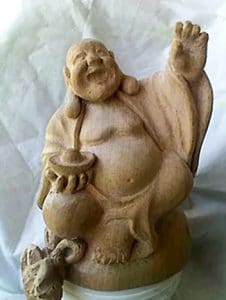 So from what I see, when it comes to giving turmeric for horses, at this point, it seems mostly to be a combination of “promise,” hope, extrapolation and supposition, backed by the occasional testimonial. You’re almost certainly not going to hurt your horse by giving him turmeric but it seems pretty unlikely that you’ll help him, either. It shouldn’t cost you a lot. But is it something that I’d recommend? Given the data, probably not.
So from what I see, when it comes to giving turmeric for horses, at this point, it seems mostly to be a combination of “promise,” hope, extrapolation and supposition, backed by the occasional testimonial. You’re almost certainly not going to hurt your horse by giving him turmeric but it seems pretty unlikely that you’ll help him, either. It shouldn’t cost you a lot. But is it something that I’d recommend? Given the data, probably not.
But this cauliflower recipe. You really should consider it.

